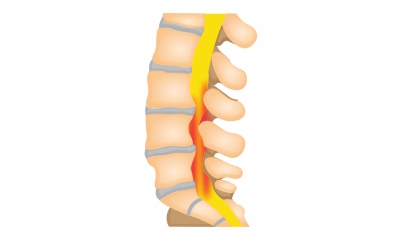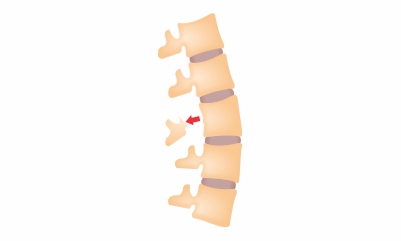Lumbar Spinal Stenosis

The cervical (neck), the thoracic (upper back), the lumbar (lower back) and the sacrum form the spinal bones. Five spinal vertebrae from the lumbar (lower back) and connect the ribs portion with the pelvis. The spinal cord passes through the canal (spinal canal).
Stenosis means narrowing or reduction in the circumference of the canal. When the spinal canal at the lower back area (Lumbar spinal canal) strat getting narrowing due to any reason is called lumbar spinal stenosis or lumbar canal stenosis. This can causes compression to the nerves which are passing through. Narrowing of the spinal canal causes backbone pain or lower back pain.
Causes
- Common causes of lumbar spinal stenosis are degeneration or osteoarthritis and disc degeneration. Degenerative changes commonly occur in old age ( after the 60s)
- Thickening of the spinal ligaments
- Slipping of the spinal bones/spondylolisthesis ( vertebrae)
- Extra body weight also increases the risk
- Wrong posture ( hyperlordosis /excessive back arch, scoliosis/ sideways or “S” curvature of the spine)
- Poor or wrong weight lifting technique also exert pressure on the spinal ligaments and vertebral disc
- Any kind of trauma or injury to the back
- Sometimes due to cancer or other severe condition
Symptoms
- Pain in the lower back or backbone pain
- Weakness in the buttocks, legs, and calves
- Numbness in the buttocks legs, and calves
- You can experience cramps in the calves while walking
- You need rest in between the walk
- Radiating pain in one or both legs ( same as sciatica)
- In rare or severe cases there are loss or movement of the legs, and normal bladder or bowel activities
Diagnosis
- Physical examination by the doctor
- X-ray shows the degenerative changes and bony changes, bone spurs, and bone alignment
- CT scan is performed to see the shape and size of the canal
- MRI shows the soft tissues and spinal cord compressions and nerve roots
Treatment
- Conservative:
-
- Medications: anti-inflammatory drugs to reduce the pain and inflammation
- Epidural injections to control and reduce the swelling
- Posture correction, and use brace support to maintain the posture
- Physiotherapy exercises: To strengthen the back muscles and improve stability, exercises also help in maintaining the posture

-
- Surgery In severe cases where conservative treatment is not possible, operative treatment is required. Spinal stenosis causes compression of the spinal nerves so decompressive laminectomy is commonly performed to removes the pressure from the nerve root. some other surgeries are also performed according to the condition:
- Laminectomy
- Foraminotomy
- Medial facetectomy
- Lumbar interbody fusion ( posterior, transforaminal)
- Posterolateral fusion
- Instrumented fusion
